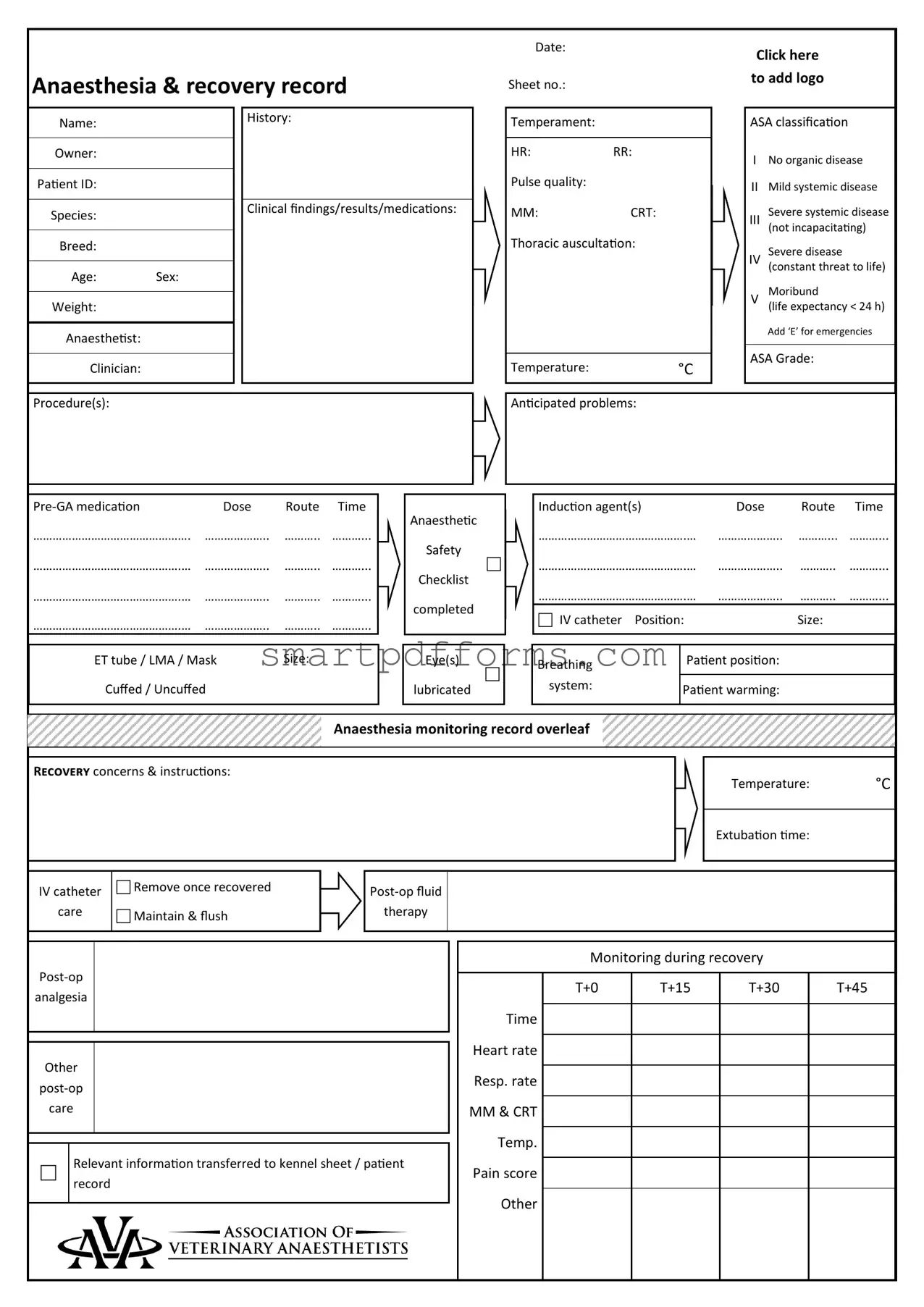- What is an Anesthesia Record form, and why is it used?
An Anesthesia Record form is a detailed document used to track all the anesthesia-related aspects of a patient’s treatment before, during, and after a surgical procedure. It includes information on pre-anesthesia medication, induction agents, patient monitoring data, and post-operative care. This form ensures that all team members are informed of the patient's anesthesia history and current status, contributing to safer and more effective patient care.
- What information is required on the Anesthesia Record form?
The form requires comprehensive information, including the patient's name, identification, history, and clinical details such as heart rate, respiratory rate, and ASA classification. It also covers the details of the anesthesia procedure, including medications, doses, and routes, equipment used, and monitoring records. The form should be completed with detailed notes on the patient's recovery, including any concerns or instructions for post-operative care.
- How does the ASA classification on the form impact patient care?
The ASA (American Society of Anesthesiologists) classification system helps assess the patient's pre-operative physical status, indicating the level of risk involved with anesthesia. Ranging from I (healthy) to V (moribund), with the addition of 'E' for emergency procedures, this classification guides the preparation and monitoring level required, ensuring tailored and appropriate care for each patient.
- What are some anticipated problems that might be listed on the form, and why?
Anticipated problems might include potential reactions to anesthesia, complications based on the patient's medical history or physical examination, and concerns related to the specific procedure being performed. Listing these helps the medical team prepare for and quickly address any issues that arise, enhancing patient safety.
- How should the medication section of the form be filled out?
The medication section should include all pre-anesthesia medications, induction agents, and any other drugs administered related to anesthesia, with specific details on the dose, route, and time of administration. Accurately completing this section is crucial for tracking the patient's response to medications and managing any adverse reactions.
- What is the significance of recording patient monitoring data during anesthesia?
Recording patient monitoring data, such as heart rate, respiratory rate, blood pressure, and temperature, is vital for assessing the patient’s response to anesthesia and the procedure. This data helps in making real-time decisions about anesthesia depth, pain management, and fluid therapy, ensuring the patient's stability and safety throughout the surgical process.
- What should be done if there are recovery concerns or special instructions?
If there are recovery concerns or special instructions, these should be clearly noted on the form for all team members involved in the patient's post-operative care. This includes details on extubation time, any complications observed, and specific instructions for IV catheter care, post-op fluid therapy, analgesia, or other necessary care. Clear communication and documentation are key to providing effective and safe post-operative recovery.


